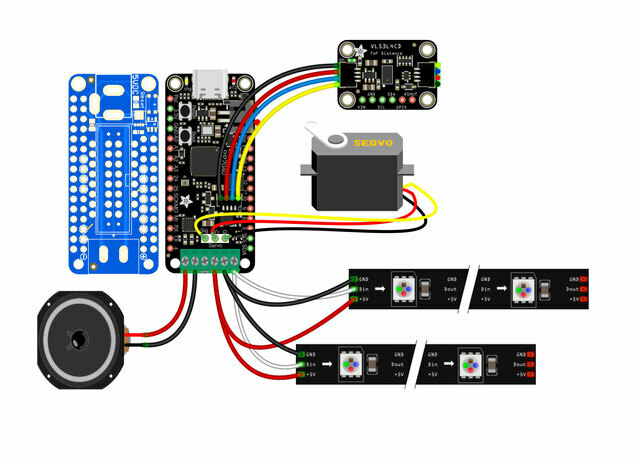Raspberry Pi Tombstone Built with Adafruit’s Prop Maker RP2040

With Halloween just around the corner, makers are firing up their soldering irons to create some really cool Raspberry Pi-powered decor. We’ve covered tons of cool Halloween-themed Pi projects over the years, including this creepy mannequin head that follows you around the room and a Pi-powered zombie arm. Today we’ve got another cool Halloween-ready project created by the Ruiz brothers for Adafruit. Using their new Prop Maker RP2040 board, they’ve created a spooky interactive tombstone.
The project is built around a Styrofoam tombstone — which is easier to modify for projects like this as the foam can be cut to make room for hardware or channels for wires. The tombstone incorporates all sorts of features, from lights and sounds to a cool RGB matrix panel. It’s accompanied by audio thanks to an integrated speaker as well as a servo-operated Raven.
These features activate in response to passersby thanks to a time of flight sensor. When trick-or-treaters approach your porch (or maybe just friends coming over to a cool Halloween party) the tombstone responds instantly with sounds and custom messages on the matrix panel. The raven can also turn its head left and right.



A full list of hardware is available on the project page for anyone who wants to recreate this build or make something similar. There’s a lot of room to get creative — you don’t necessarily need to make a tombstone with these features. The main board is an Adafruit RP2040 prop maker feather. It’s connected to an Adafruit VL53L4CD time of flight sensor, an RGB matrix, and a speaker, as well as a NeoPixel RGBW mini button.
The project was programmed using CircuitPython. You can find the full source code for the project over at the Adafruit website. You can download the project bundle and use what they’ve created or modify it to use bits and pieces for a custom build. What’s neat about this project is that it’s flexible for a multitude of creations. You could make a spooky picture frame that responds to people walking by or animate a skeleton with LEDs in the eyes, etc.
If you want to see this creepy Raspberry Pi project in action, check out the full tutorial over at Adafruit.
Get Tom's Hardware's best news and in-depth reviews, straight to your inbox.

Ash Hill is a contributing writer for Tom's Hardware with a wealth of experience in the hobby electronics, 3D printing and PCs. She manages the Pi projects of the month and much of our daily Raspberry Pi reporting while also finding the best coupons and deals on all tech.
-
NeoMorpheus A bit off-topic, but I wish that the Pi foundation released a Pro version of their AIB, using only high performance ARM cores, like 4 X3 or X4 cores.Reply